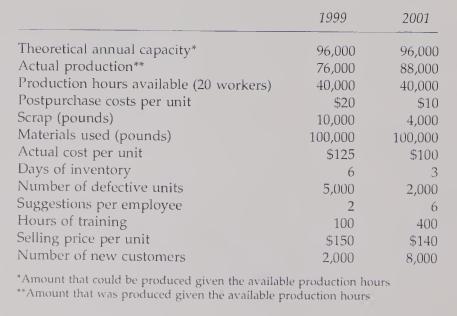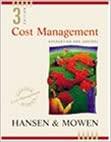At the end of 1999, Zheng Enterprises implemented a low-cost strategy to improve its com petitive position.
Question:
At the end of 1999, Zheng Enterprises implemented a low-cost strategy to improve its com¬
petitive position. Its objective was to become the low cost producer in its industry. To lower costs, Zheng undertook a number of improvement activities such as JIT production, total quality management, and activity-based management. Now, after two years of operation, the president of Zheng wants some assessment of the system's achievements. To help pro¬
vide this assessment, the following information on one product has been gathered;

Required:
1. Compute the following measures for 1999 and 2001;
a. Theoretical velocity and cycle time
b. Actual velocity and cycle time
c. Percentage reduction in postpurchase costs (for 2001 only)
d. Labor productivity (output/hours)
e. Scrap as a percentage of total material issued
f. Percentage change in actual product cost (for 2001 only)
g. Percentage change in days of inventory (for 2001 only)
h. Defective units as a percentage of total units produced i. New customers per unit of output j. Total hours of training k. Selling price per unit (as given)
l. Total employee suggestions 2. For the measures listed in Requirement 1, list likely strategic objectives, classified ac¬
cording to the four Balance Scorecard perspectives. Next, classify each measure as a lag or lead measure. Finally, evaluate the success of the strategy. Would you like any ad¬
ditional information to carry out this evaluation? Explain.
3. Based on the results in Requirement 2, express the Zheng's strategy as a series of ifthen statements. What does this tell you about Balanced Scorecard measures?
Step by Step Answer:

Cost Management Accounting And Control
ISBN: 9780324002324
3rd Edition
Authors: Don R. Hansen, Maryanne M. Mowen





